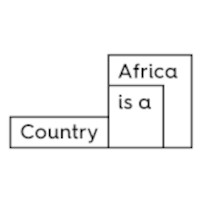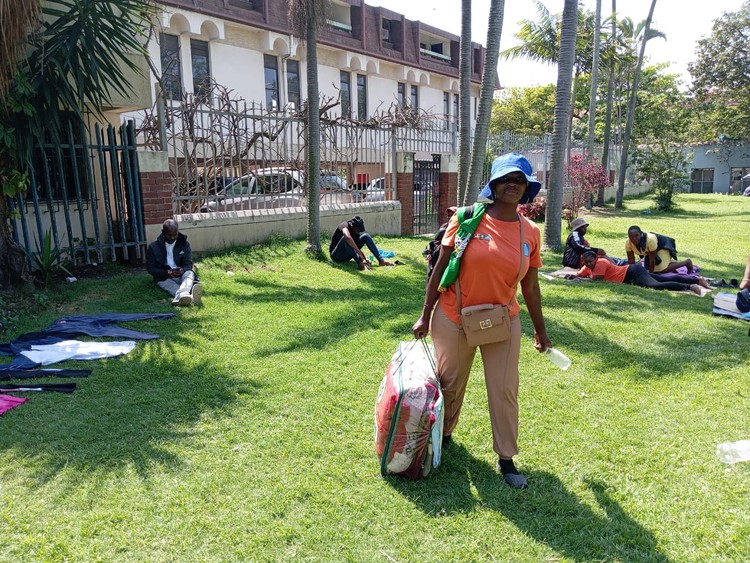In order to better resist contemporary, neocolonial accumulation, we need to historicize land grabs in Africa.
Photo by Annie Spratt on Unsplash
Contemporary land grabs and agricultural investments have generated huge attention. The transformations in land tenure, production and social reproduction in the aftermath of land rushes have generated a rich literature. A central question is about labor, and its implications for structural transformation and agrarian futures.
Extraversion, exports and the labor question
In Senegambia, the intersecting pressures of food, land, and capital were historically linked to the quest for new labor and cash crops (cotton, then groundnut, followed by fresh fruits and vegetables) in frontier markets for Europe. Some of these transformations have been widely documented by Egyptian economist Samir Amin, Senegalese historian Boubacar Barry and American historian Sven Beckert. In 1819, the Ndiaw Treaty between France and the leaders of the Waalo Kingdom (in northern Senegal) was signed, allowing France to set up three agricultural bases in northern Senegal for export. This agricultural colonization project failed mostly because of the resistance of the inhabitants of the Waalo Kingdom (the Waalo-Waalo) and the inability of French colonial leaders to secure land concessions they thought were automatically and permanently transferred to them through the treaty. The Waalo leaders, who managed the land on behalf of their community, understood otherwise. This conflicting interpretation on how land is governed became a recurrent source of conflict.
Another problem was the shortage of labor—the Waalo-Waalo refused forced labor and preferred to cultivate their subsistence crops rather than those for export. This refusal led to the return of clandestine slave trade and related abuses. The insecurity created by Waalo’s neighbors and the resistance of merchant capital added to the failure. These are key to understanding how various historical dynamics have sedimented to make the Senegal River Valley Region (historical Waalo) the site of the land rush that began in 2007-2008, especially for the production of export fresh fruits and vegetables.
Revisiting this rich history offers us a better understanding of relations of exploitation and contemporary resistance to extractivism by a number of communities in this region. It is a reminder of the violence of primitive accumulation, a violence that is ongoing. Tanzanian historian Issa Shivji puts it well:
The early encounter of Africa with Europe was not commercial involving the exchange of commodities, but rather the unilateral looting of human resources. African slavery was neither a trade, nor a mode of production. It was simply a robbery of a people on a continental scale perpetrated over four centuries through force of arms.
Despite the subsequent attempt to develop new crops in 1826 in Saint-Louis, merchant capital eventually prevailed with the failure of agriculture. As a result, post-colonial leaders “inherited a country organized by and for merchant capital” after 1960 as Catherine Boone puts it. In the same vein, Koddenbrock, Kvangraven and Sylla note how merchant capital subsequently established colonial and post-colonial structures of extraction.
Beyond processes of land acquisition, it is important to pay attention to how land becomes capital and how agricultural workers are included, excluded, or rather adversely incorporated into these agri-food networks.For instance, in her 2011 essay on land grabbing in Southern Africa, Ruth Hall provides a useful typology of agricultural transformations from subsistence to capitalist imperatives. Besides models that are based on the displacement of primary producers and the establishment of large export-oriented agricultural estates, Hall emphasizes “commercialization in situ” and “outgrower” schemes whereby petty commodity producers and other land users are incorporated into commercial value chains. This is a further invite to go beyond eurocentrism and methodological nationalism in our analyses of the genealogy of capitalism and of processes of exploitation.
Legacies of racial patriarchal colonial capitalism
In 1961, one year after the celebration of the independence of 17 African nations including Senegal, French philosopher Frantz Fanon published The Wretched of the Earth. He wrote:
The colonial system, in fact, was only interested in certain riches, certain natural resources, to be exact those that fuelled its industries(…). As a result, the young independent nation is obliged to keep the economic channels established by the colonial regime. It can, of course, export to other countries and other currency zones, but the basis of its exports remains basically unchanged. (…) Perhaps everything needs to be started over again: The type of exports needs to be changed, not just their destination. (…) In order to do this, however, something other than human investment is needed. (…) If working conditions are not modified, it will take centuries to humanise this world which the imperialist forces have reduced to the animal level.
African nations produced certain crops only to fulfill the needs of European metropoles. In Senegal for instance, the increasing demand for oilseeds, which were in short supply in European markets, was a decisive factor in the country’s decision to produce vegetable oil before independence. The introduction of groundnuts by the French to meet the needs of the colonial economy influenced Senegal’s specialization in this speculative export culture, and increased rural social differentiation with the spread of commerce and cash cropping.
Fanon already understood the centrality of labor in the alienation and subjugation of African postcolonial economies into an international division of labor and food production that were never meant for their own advancement and that of their peoples. He called on these countries to re-think their priorities to define the meanings of independence and sovereignty for themselves and by themselves: What should they produce? For the benefit of whom? Why? He understood that arguments based on inherited, often fabricated “comparative advantage” were untenable—keeping Global South countries doomed to prioritize the production of food for others, mostly in the Global North, at the cost to their own.
“Industries without smokestack” and sovereign agrarian futures
Export horticulture has been presented as a promising pathway for Africa to industrialize in a context of jobless growth. It has become one of Senegal’s three most promising export sectors. Alongside other tradable services such as tourism, transport and IT, export horticulture, particularly in the fresh fruit and vegetable sector and agro-processing value chains, is now being defined as an alternative to manufacturing in Africa. Export horticulture ispraised for its potential to structurally transform African economies without manufacturing (the traditional smokestacks industry par excellence). For example, Senegalese horticultural exports to Europe have experienced a spectacular rise in the last decade— from 7,767,319kg in 2000, 29,910,997kg in 2009 to 105,982,906kg in 2019 according to the data from the Senegalese Government’s Investment Agency.
But what is industrialisation if it obstructs sovereign futures? Samir Amin understood this and called for a delinking, not as in autarky, but as refusal for a country to submit its national development strategy to the imperative of globalization, and accumulation on a world scale. Only People Make Their Own History (2019), a collection of Amin’s 10 most influential essays published after his death, contains a vivid reminder of the agrarian contradictions of capitalism and the lethal violence of ongoing dynamics of primitive accumulation:
The contention that capitalism has indeed solved the agrarian question in its developed centres has always been accepted by large sections of the left (…). What was always overlooked was that capitalism, while it solved the question in its centres, did it through generating a gigantic agrarian question in the peripheries, which it can only solve through the genocide of half of humankind.
As the African feminist scholar Oyèrónké Oyěwùmí reminds us, colonization was as much about “colonising bodies and minds” as it was about colonising physical countries. It is therefore necessary to replace land grabs and food production in a historical perspective in order to understand how yesteryear processes of accumulation and political responses to them have sedimented to influence, at least partially, how communities respond to land deals today. In failing to historicise land grabs, we fail to disaggregate dynamics of accumulation, establish the genealogy of racial capitalism, and document resistance beyond dispossession. We also perpetuate the myth that the sole purpose of this accumulation is land only, not labor, and we also fail to define what to produce and for whom.
The case study that took place more than 200 years ago in the Waalo showcases the centrality of labor during land rushes and how it exacerbated social differentiation and mobility. It also transformed geographies of food production, with an increasing overreliance on networks of caring labor in the Global South for capitalist social reproduction.
Examining contemporary dynamics of land and labor capitalization in African and global agri-food networks in the light of this rich history allows us to understand the connections and disconnections of accumulation globally, its local ramifications, as well as some of the promises and discontents of/with post-colonial development.






